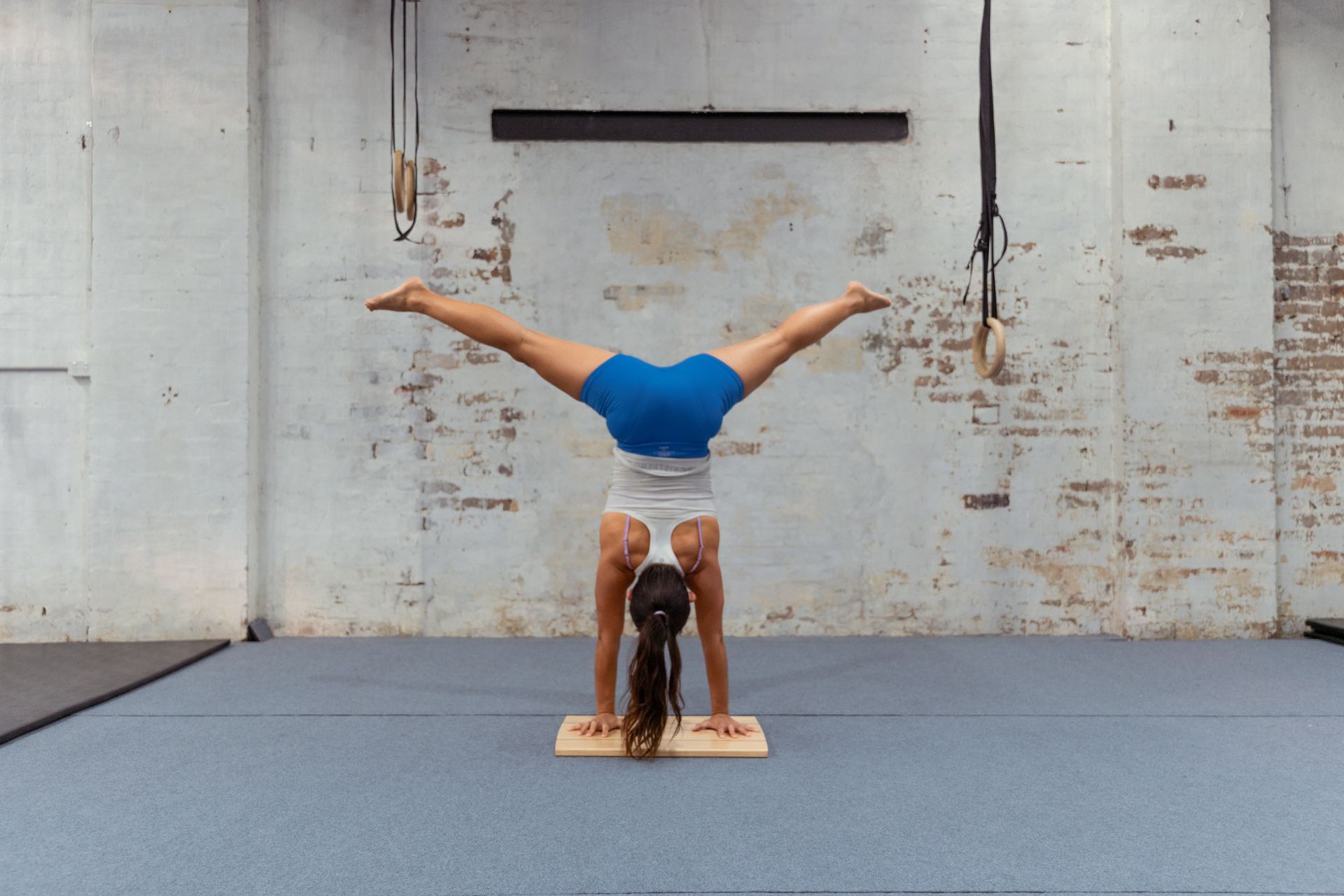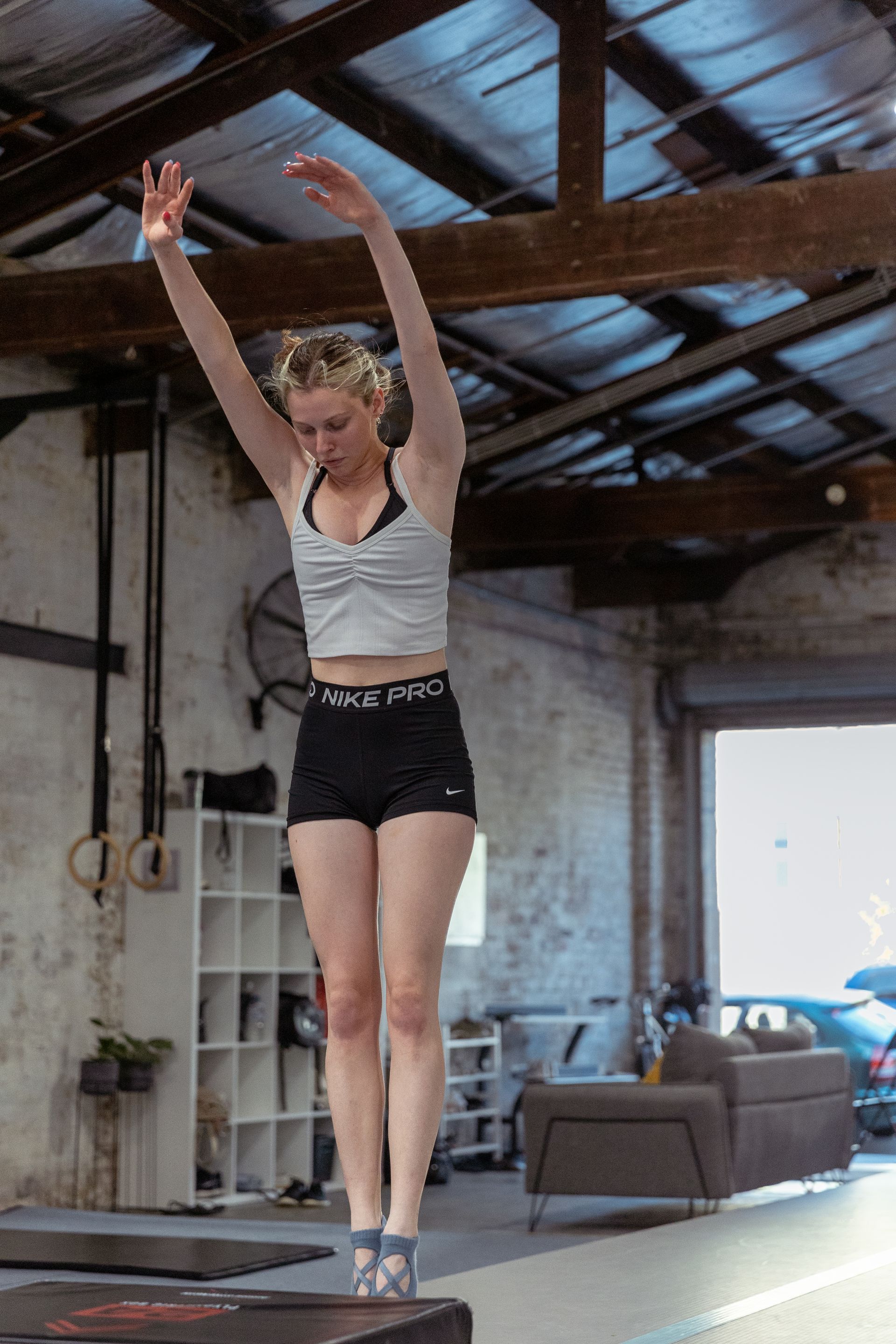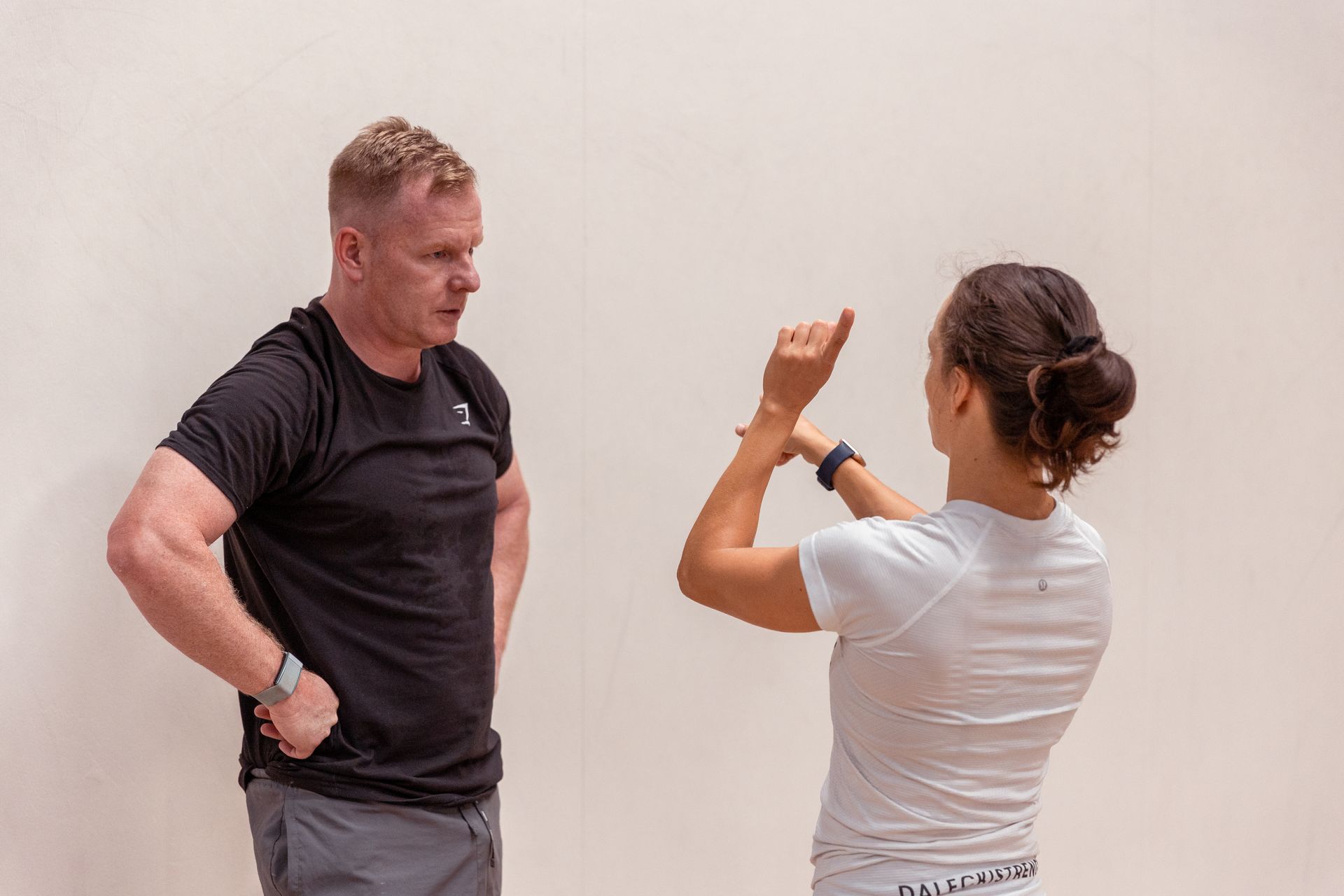Getting Fit with Calisthenics Training: The Ultimate Beginner's Guide

Calisthenics Training is a form of exercise that involves using your own body weight to build strength, endurance, and flexibility. It involves a range of bodyweight exercises such as push-ups, pull-ups, squats, lunges, and planks that are performed in a repetitive and rhythmic manner. Unlike weightlifting, which requires equipment such as dumbbells and barbells, Calisthenics Training can be performed anywhere, making it a convenient and accessible way to get fit.
Getting Started with Calisthenics Training
While Calisthenics Training may seem simple and easy to perform, it is important to approach it with caution, especially if you are new to the exercise. A beginner’s guide to Calisthenics Training can help you understand the basics of the exercise, avoid injury, and create an effective workout plan that is tailored to your fitness goals and abilities.
Understanding the Basics
What is Calisthenics Training ?
Calisthenics Training is a form of exercise that involves using your own body weight to build strength, endurance, and flexibility. It involves a range of exercises that are performed in a repetitive and rhythmic manner, such as push-ups, pull-ups, squats, lunges, and planks. The exercises can be performed anywhere and require little to no equipment, making it a convenient and accessible way to get fit.
What are the Benefits of Calisthenics Training?
Calisthenics Training provides a range of benefits that can help you achieve your fitness goals. Firstly, it builds strength and muscle endurance, which can help you perform daily activities more efficiently and reduce the risk of injury. Secondly, it improves your cardiovascular health and helps you burn calories, which can help you maintain a healthy weight. Finally, it enhances your flexibility, agility, and balance, which can improve your overall physical performance.
Calisthenics Training is a convenient and accessible way to get fit, providing a range of benefits that can help you achieve your fitness goals. A beginner’s guide to Calisthenics Training can help you understand the basics of the exercise, avoid injury, and create an effective workout plan that is tailored to your fitness goals and abilities.
How to Start Your Calisthenics Training Journey
Finding a Calisthenics Training Coach or Trainer
If you are new to calisthenics training, it is a good idea to work with a coach or trainer who can help you learn the correct form and technique for each exercise. They can also help you create a workout plan that is tailored to your fitness goals and abilities. Here are two options for finding a Calisthenics Training coach or trainer in Sydney:
Calisthenics Training Coach in Sydney
Dalecki Strength is a well-known Calisthenics Training gym in Sydney that offers personalized coaching and training programs to help beginners get started with Calisthenics Training . They offer group classes and one-on-one training sessions that cater to all fitness levels.
Calisthenics Training Personal Trainer in Sydney
If you prefer more personalized attention, you can consider working with a Calisthenics Training personal trainer in Sydney. Some of the best personal trainers in the city include those from F45 Training, Fitness First, and Anytime Fitness.
Joining a Calisthenics Training Class
Joining a Calisthenics Training class is a great way to get started with the exercise, especially if you enjoy working out with a group. Here are some options for Calisthenics Training classes in Sydney:
Calisthenics Training Classes in Sydney
Dalecki Strength offers group classes that cater to all fitness levels. They focus on functional strength training and calisthenics training, providing a fun and challenging workout for beginners.
Indoor Calisthenics Training Gym in Sydney
If you prefer working out in a gym setting, you can consider joining an indoor Calisthenics Training gym in Sydney. Some popular options include Jungle Brothers, PlayStreets, and InnerFit.
Choosing a Calisthenics Training Park in Sydney
If you prefer working out outdoors, you can consider training at one of the many Calisthenics Training parks in Sydney. Here are some benefits of outdoor Calisthenics Training and some of the best Calisthenics Training parks in the city:
Benefits of Outdoor calisthenics training
Outdoor Calisthenics Training offers a range of benefits, including fresh air, sunshine, and a change of scenery. It can also provide a more challenging workout, as you will be working with uneven terrain and different types of equipment.
Getting started with Calisthenics Training in Sydney is easy and accessible, thanks to the range of coaches, classes, and parks available. Whether you prefer indoor or outdoor training, there is an option for everyone. By working with a coach or trainer and joining a class or gym, you can learn the correct form and technique for each exercise and create an effective workout plan that is tailored to your fitness goals and abilities

Beginner Calisthenics Training Exercises
Calisthenics Training is a full-body workout that requires no equipment and can be done almost anywhere. The following exercises are perfect for beginners to get started with calisthenics training.
Upper Body Exercises
Push-ups
Push-ups are one of the most effective Calisthenics Training exercises for building upper body strength. They primarily target the chest, triceps, and shoulders. To perform a push-up, start in a plank position with your hands shoulder-width apart. Lower your body until your chest almost touches the ground, then push back up.
Pull-ups
Pull-ups are an excellent exercise for building back and arm strength. They primarily target the latissimus dorsi muscle, which is the largest muscle in the back. To perform a pull-up, grasp a bar with your palms facing away from you, then pull your body up until your chin clears the bar.
Dips
Dips are a great exercise for targeting the triceps and chest. To perform dips, place your hands on parallel bars or a stable surface, then lower your body until your elbows reach a 90-degree angle, then push back up.
Lower Body Exercises
Squats
Squats are a foundational exercise for building lower body strength. They primarily target the quadriceps, glutes, and hamstrings. To perform a squat, stand with your feet shoulder-width apart, then lower your body until your thighs are parallel to the ground, then stand back up.
Lunges
Lunges are an excellent exercise for targeting the quadriceps, glutes, and hamstrings. To perform a lunge, step forward with one leg, then lower your body until your back knee almost touches the ground, then stand back up and repeat with the other leg.
Calf Raises
Calf raises are an effective exercise for building calf strength. To perform a calf raise, stand with your feet shoulder-width apart, then raise your heels off the ground as high as you can, then lower them back down.
Core Exercises
Planks
Planks are an excellent exercise for building core strength. To perform a plank, start in a push-up position, then lower your body down to your forearms. Hold your body in a straight line for as long as you can.
Leg Raises
Leg raises are an effective exercise for targeting the lower abs. To perform leg raises, lie on your back with your hands at your sides, then lift your legs up until they are perpendicular to the ground, then lower them back down.
Sit-ups
Sit-ups are a classic exercise for building core strength. To perform a sit-up, lie on your back with your knees bent and your feet flat on the ground, then sit up until your chest touches your knees, then lie back down.
By incorporating these exercises into your workout routine, you can build strength and get fit with calisthenics training. Remember to start with the basics and gradually increase the intensity of your workouts as you get stronger.

Calisthenics Training Programs for Beginners
Calisthenics Training is a fantastic form of exercise that provides a full-body workout while only using your bodyweight as resistance. With the right training program, you can develop your strength, flexibility, and endurance. Here's how to create a Calisthenics Training program for beginners.
How to Create a Calisthenics Training Program
When creating a Calisthenics Training program, there are a few essential steps you should follow:
- Determine your goals: Before you begin your Calisthenics Training journey, it's essential to know what you want to achieve. Do you want to improve your strength, flexibility, or endurance? Having clear goals will help you create a training program that suits your needs.
- Choose your exercises: Once you've identified your goals, you can start selecting exercises that target the areas you want to improve. A good rule of thumb is to choose exercises that work multiple muscle groups at once, such as push-ups, pull-ups, and squats.
- Determine your sets and reps: When it comes to calisthenics training, the number of sets and reps you do is just as important as the exercises you choose. Beginners should aim to do two to three sets of 10 to 15 reps per exercise.
- Plan your workout schedule: To see results from your Calisthenics Training program, you need to be consistent. Determine how many days per week you want to work out and plan your schedule accordingly.
Sample Calisthenics Training Program for Beginners
Here's an example of a Calisthenics Training program for beginners that you can use as a guide:
Day 1:
- Warm-up: 5-minute jog
- Upper body exercises: 2 sets of 10 push-ups, 2 sets of 10 dips, 2 sets of 5 pull-ups
- Core exercises: 2 sets of 30-second planks, 2 sets of 10 leg raises
- Cool-down: 5-minute jog
Day 2:
- Warm-up: 5-minute jog
- Lower body exercises: 2 sets of 10 squats, 2 sets of 10 lunges, 2 sets of 10 calf raises
- Core exercises: 2 sets of 30-second side planks (each side), 2 sets of 10 sit-ups
- Cool-down: 5-minute jog
Day 3:
- Rest day
Repeat the cycle of Day 1 and Day 2 for three to four weeks before increasing the intensity of your workout.
Tips for Progression in calisthenics training
As you get stronger, you can progress your Calisthenics Training program by:
- Increasing the number of sets and reps: Once you can perform two to three sets of 10 to 15 reps with ease, try increasing the number of sets or reps.
- Trying harder variations: Once you've mastered the basic exercises, try harder variations to challenge your muscles further.
- Incorporating new exercises: Don't be afraid to try new exercises to target different muscle groups.
- Using equipment: If you have access to equipment such as resistance bands or gymnastics rings, use them to make your workout more challenging.
Calisthenics Training program that suits your goals and abilities, you can make significant improvements in your strength, flexibility, and endurance. Start with the basics and progress gradually to avoid injury and achieve the best results.

Nutrition and Recovery for calisthenics training
Importance of Nutrition in calisthenics training
Calisthenics Training can be quite intense and physically demanding, and thus requires a balanced and healthy diet to support muscle growth, repair and recovery. Proper nutrition plays an essential role in maximizing performance, as well as reducing the risk of injuries and other health issues.
Macronutrients and Micronutrients
To maintain optimal health and performance, it's important to consume a balanced diet that includes adequate amounts of macronutrients (carbohydrates, proteins, and fats) and micronutrients (vitamins and minerals). Carbohydrates are a primary source of energy, while proteins help repair and build muscle tissue. Fats provide energy, support brain function, and aid in hormone production. Micronutrients are essential for various bodily functions, including bone health, immune function, and energy metabolism.
Pre- and Post-Workout Nutrition
It's also essential to eat the right foods at the right time, particularly before and after a workout. Eating a small meal containing carbohydrates and proteins about 30 minutes before a workout can provide the necessary energy to perform well during the session. Post-workout, consuming a meal or snack that includes protein and carbohydrates can help speed up the recovery process and aid muscle repair.
Recovery Techniques for calisthenics training
Recovery is a crucial aspect of calisthenics training. Overtraining, lack of rest and recovery, and inadequate nutrition can result in fatigue, injuries, and reduced performance. To maximize the benefits of training and minimize the risk of injuries, it's essential to incorporate proper recovery techniques into your training regimen.
Stretching and Mobility Work
Stretching and mobility work are essential for reducing muscle soreness and preventing injuries. Stretching helps improve flexibility, joint range of motion, and blood circulation, while mobility work targets specific muscles and joints to improve overall movement and performance.
Rest and Sleep
Rest and sleep are crucial for muscle repair and recovery. The body repairs and rebuilds muscle tissue during rest, and lack of rest can lead to fatigue, muscle soreness, and reduced performance. Getting enough sleep is also important as it helps the body produce growth hormone, which promotes muscle repair and recovery.
Foam Rolling and Massage
Foam rolling and massage can help alleviate muscle soreness, improve mobility, and speed up recovery. Foam rolling uses a foam roller to apply pressure to specific muscle groups, while massage involves manipulating soft tissues to improve circulation, promote relaxation, and reduce muscle tension.
Common Mistakes to Avoid in calisthenics training
Overtraining
Overtraining occurs when you train beyond your body's ability to recover. It can lead to injuries, fatigue, and decreased performance. To avoid overtraining, it's essential to include rest and recovery days in your training program, and to gradually increase the intensity and volume of your workouts over time.
Poor Form and Technique
Poor form and technique can lead to injuries and reduced performance. It's essential to focus on proper form and technique when performing Calisthenics Training exercises, as well as to start with the basics and progress gradually to more advanced movements.
Neglecting Rest and Recovery
Neglecting rest and recovery can lead to fatigue, injuries, and decreased performance. It's essential to include rest and recovery days in your training program, and to incorporate proper recovery techniques such as stretching, foam rolling, and massage into your routine.
Calisthenics Training can be a highly effective way to improve overall fitness, build muscle, and enhance performance. By following a balanced nutrition plan, incorporating proper recovery techniques, and avoiding common mistakes, beginners can set themselves up for
Conclusion
Recap of Beginner's Guide to calisthenics training
In this ultimate beginner's guide to calisthenics training, we covered everything you need to know to get started with this effective and rewarding form of exercise. We learned what Calisthenics Training is, the benefits of calisthenics training, how to warm up properly, beginner Calisthenics Training exercises for upper body, lower body, and core, how to create a Calisthenics Training program, the importance of nutrition and recovery, and common mistakes to avoid in calisthenics training.
Final Thoughts
Calisthenics Training is an excellent way to build strength, increase flexibility, and improve overall fitness. It can be done anywhere, anytime, and requires no equipment. With the right guidance and training, anyone can achieve great results with calisthenics training. Remember to start slowly and gradually increase your intensity and difficulty level to avoid injury and burnout.
Finding a Calisthenics Training Community in Sydney
If you're looking for a supportive and motivating community to help you achieve your fitness goals, consider joining a Calisthenics Training gym or class in Sydney. Dalecki Strength is a leading indoor Calisthenics Training gym in Sydney, offering a range of classes and personal training sessions to help you reach your full potential. You can also find Calisthenics Training friends in Sydney by joining online forums and social media groups dedicated to calisthenics training.
No matter where you are on your fitness journey, Calisthenics Training is an excellent choice for building strength, improving flexibility, and enhancing overall fitness. With dedication, discipline, and the right guidance, you can achieve great results and transform your body and mind with calisthenics training.
GET IN TOUCH
We will get back to you as soon as possible.
Please try again later.
©2024 DALECKI STRENGTH. All right reserved.
Web Development and Strategy by NoCoincidence
